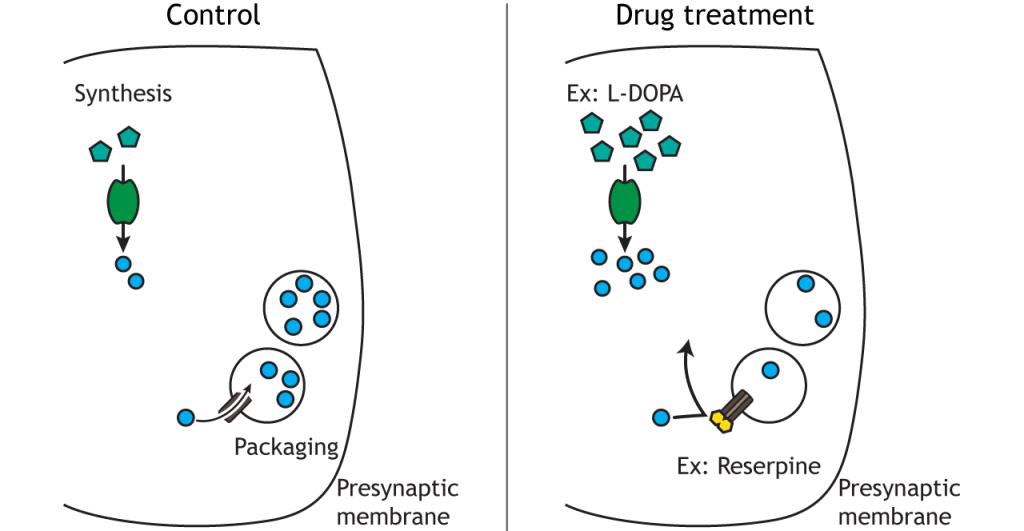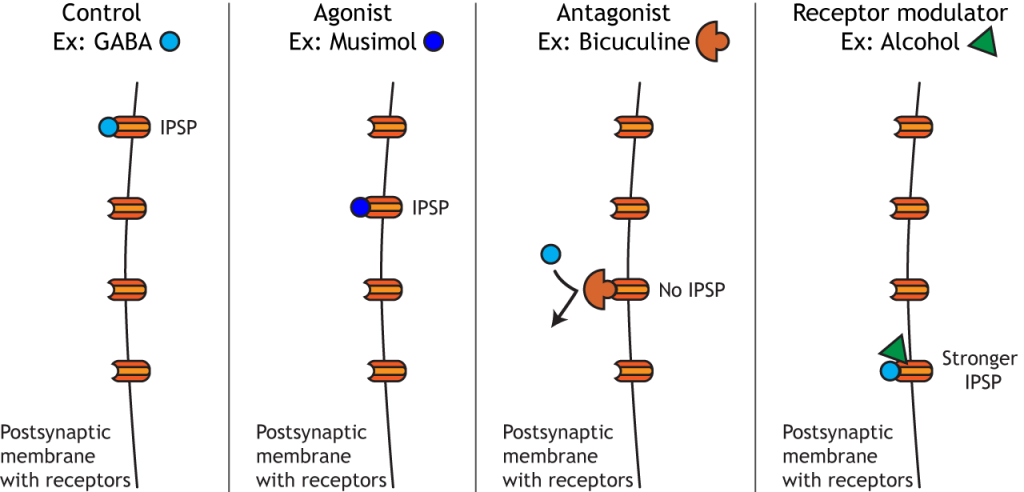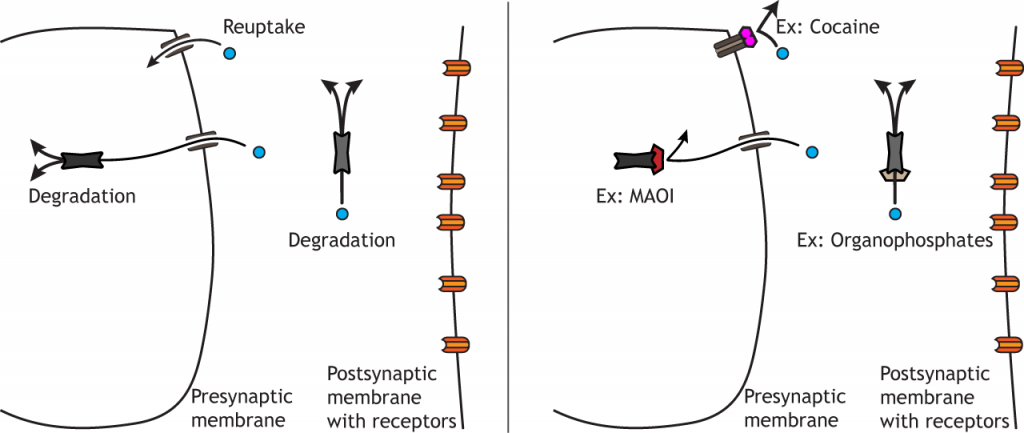14 Drug and Toxin Effects
Casey Henley
Drugs and toxins exert their effects on the nervous system by interfering with normal neuronal processes, from neurotransmitter synthesis to receptor function. Understanding these mechanisms is crucial for developing therapeutic interventions and recognizing the dangers of various substances.
Drug and toxin effects can be excitatory, inhibitory, or modulatory
Synaptic Effects
As we have seen, the synapse is an incredibly complex structure, and for small molecule neurotransmitters, the entire “lifecycle” of the transmitter occurs in this space – synthesis, packaging, release, action, and termination. This means there are numerous targets upon which drugs and toxins can act and alter synaptic communication.
Drug Effects on Neurotransmitter Release
Drugs can alter neurotransmitter synthesis pathways, either increasing or decreasing the amount of neurotransmitter made in the terminal, affecting how much transmitter is released. An example of this is administration of L-DOPA, a dopamine precursor molecule that results in increased dopamine production; it is used as a treatment for Parkinson’s Disease.
Neurotransmitter packaging is another site of possible drug action. Reserpine, which has been used to treat high blood pressure, blocks the transport of the monoamine transmitters into vesicles by inhibiting the vesicular monoamine transporter (VMAT). This decrease the amount of neurotransmitter stores and the amount of neurotransmitter released in response to an action potential.

Drug Effects on the Postsynaptic Membrane
The neurotransmitter receptors are another critical location for drug and toxin action. Agonists mimic neurotransmitter effects, whereas antagonists block neurotransmitter effects. Muscimol, a component of some mushrooms, is an agonist for the ionotropic GABA receptor. Bicuculine, a component of some plants, is an antagonist to this receptor and blocks the action of GABA. Additionally, many chemicals are able to modulate receptors in either a positive or negative fashion. Alcohol binds to the GABA receptor and increases the time the receptor is open when GABA binds.

Drug Effects on Neurotransmitter Clearance
Finally, neurotransmitter degradation and reuptake can also be altered by drugs and toxins. Depending on the neurotransmitter, enzymes located in either the synapse or in the terminal are responsible for degradation of the transmitter, and these enzyme can be blocked by drugs. Organophosphates are found in many pesticides and prevent the action of acetylcholinesterase, the enzyme that breaks down acetylcholine in the synapse. This inhibition increases acetylcholine action on the postsynaptic neuron. Monoamine oxidase inhibitors (MAOIs) prevent monoamine oxidase from degrading the biogenic amine neurotransmitters. MAOIs have been used as antidepressants since they increase the amount of transmitter available. Additionally, drugs can prevent the reuptake of neurotransmitters into the presynaptic terminal. Cocaine blocks the dopamine transporter, which results in increased action of dopamine in the synapse.

Non-Synaptic Effects
Drugs and toxins can also affect neuron function by acting outside of the synapse. For example, some chemicals change voltage-gated ion channel dynamics. Veratridine, a compound found in plants from the lily family, prevents voltage-gated sodium channels from inactivating. Initially, this causes an increase in neurotransmitter release, but it can quickly lead to excitotoxicity.
Conclusion
Drugs and toxins provide valuable tools for understanding neural function while also presenting significant health risks. By targeting specific components of synaptic transmission—from synthesis and release to receptor binding and clearance—these substances can dramatically alter neural communication. This knowledge forms the foundation for both therapeutic drug development and toxicology research.
Key Takeaways
- There are many ways in which drugs and toxins can alter neuron function
- Effects can be excitatory, inhibitory, or modulatory

